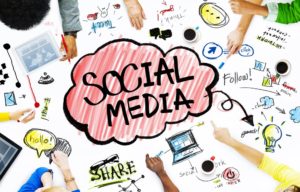Uncertainty abounds nowadays- wars, oil prices, pandemics, start-ups – acting as challengers and disrupting businesses; during such times, being conscious of sustainability and ‘Design Thinking’ redefines business models.
The uncertainty constantly challenges businesses to review and rethink their focus, their business, and most importantly their survival. In such a state of complexity, there is possibly a need to question the basics and revisit the obvious, and that is where design thinking comes in. It offers a thinking approach to redefine all of this in a more human-centric manner.
So what is design thinking? It is purely being more humane and empathetic with the belief that the end-user is at the heart of all decision making
Design thinking is a process which integrates critical thinking, cross functional collaboration, empathy, iteration, & curiosity to deliver breakthrough-outcomes. Companies are increasingly leveraging design thinking to achieve quantum growth.
The thought process while starting with a consumer centric approach also has to pass through the test of technical viability and business feasibility.
The 5 stages of design thinking are-
Stage 1 Empathize – Research the Target Group-User (TGU) needs
We have to set our assumptions and biases aside when we investigate the possible problem that is being attempted to be solved. We have to immerse ourselves in the context of the problem and possibly talk to TGU, who faces it, and speak to the possible experts and even look at similar challenges faced by, and solutions of, diverse businesses.
There are ways to understand the same, namely, FGD, Focus Interviews, Storytelling and Empathy maps. Empathy maps are particularly useful as they map what people say, do, think and feel in the context of the problem. “Observe & Hear Closely”. It allows us to understand how people feel, behave, and experience the problem and possibly how they might see a solution.
Stage 2 Define – The needs & problems of the TGU need to be defined
The insights gathered need to be summarized in a “human-centric” problem rather than business goals. This can be done by identifying the frustrations and challenges that people face through empathy maps, and how people are solving problems and what we need to do for them to find newer and easier solutions to overcome their frustrations.
To exemplify, rather than defining how to get a 20% increase in online sales of juice in Gurgaon, maybe we need to understand the consumption pattern of a health-conscious consumer, which could mean that consumers looking for healthy food may need to be educated on the meaning of ‘health’.
Stage 3 Ideate – Challenge the Assumptions & Evolve ideas
Once the problem/pain-points are identified it is imperative to start ideating and brainstorming the possible alternatives and evolve ideas. Prioritize the breadth rather than depth while developing ideas, as we need to solve a larger range of challenges. The focus needs to be on developing ideas which lead us to formulate prototypes & test the hypotheses.
So basically ideate and evaluate, and sketch your ideas and brainstorm in order to develop possible metrics against which to assess them. A good way to evaluate is to put ideas on the table and ask for a vote.
The ideas post evaluation with maximum votes are put through a prototype test.
Stage 4 Prototype – Start by Creating Alternate Solutions
This is when the idea identified gets a physical form. The same is defined and put through a paper test where a ‘what-if’ analysis could also be done. This helps to ensure that significant gaps are debated on and plugged before the prototype is put through a test. The prototyping stage should be a realistic discussion on what will work and what will not and changes are incorporated in a circular and iterative process, until there seems to be a workable structure. Maybe at this stage it is a good idea to put multiple test cases in discussion as that allows the breadth of possible solutions.
Stage 5 Test – Test the Solutions you feel are the best in ground situations, simulations, pilots
This stage could be considered to be an extension of the empathizing stage .This stage helps to understand in more detail the pain-points of the TGU and explore if the possible solutions being offered are really giving the desired outcomes, those which really help TGU change their behavior or take different decisions towards finding solutions. The answer to gauge is whether a significant impact has been made. It is important to get a feedback; there are various ways in which companies seem to be doing it – simulations, pilot test markets, test groups.
The objective is to put the best possible ideas forward and be open to critical feedback towards finding the right possible solutions. In fact this stage may even reveal that the problems identified and/or solutions proposed were not determined correctly.
Design thinking is an intimate way to get to know the TGU and problem definition better, so that the possible solutions to identified problems have a higher chance of success.
Questions to reflect
- Do companies succeed with design thinking ?
-Yes they do. Some examples of successful deployment of design thinking are listed below-
https://hbr.org/2015/09/how-indra-nooyi-turned-design-thinking-into-strategy
https://www.bbva.com/en/airbnb-design-thinking-success-story/
- But do companies nowadays “really” use this approach and do they spend enough time in each stage before formalizing a launch or a solution?
-We see a lot of initiatives-launches which did not work due to incomplete efforts in stages of ideation, prototyping and testing…(discuss)
- Maybe design thinking approach is one of the reasons why Reliance Retail and Jio are hyper growth platforms?




